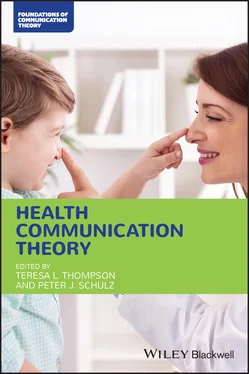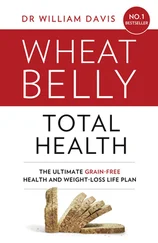32 Eagly, A. H., & Chaiken, S. (1993). The psychology of attitudes. New York, NY: Harcourt Brace Jovanovich.
33 Evans, A. T., & Clark, J. K. (2012). Source characteristics and persuasion: The role of self‐monitoring in self‐validation. Journal of Experimental Social Psychology, 48, 383–386. doi:10.1016/j.jesp.2011.07.002
34 Finnell, K. J., & John, R. (2017). Formative research to understand the psychographics of 1% milk consumption in a low‐income audience. Social Marketing Quarterly, 23, 169–184. doi:10.1177/1524500417697205
35 Fuglestad, P. T., & Snyder, M. (2010). Status and the motivational foundations of self‐monitoring. Social and Personality Psychology Compass, 4, 1031–1041. doi:10.1111/j.1751‐9004.2010.00311.x
36 Graeff, T. R. (1996). Image congruence effects on product evaluations: The role of self‐monitoring and public/private consumption. Psychology & Marketing, 13, 481–499.
37 Grandpre, J., Alvaro, E. M., Burgoon, M., Miller, C. H., & Hall, J. R. (2003). Adolescent reactance and anti‐smoking campaigns: A theoretical approach. Health Communication, 15, 349–366. doi:10.1207/s15327027hc1503_6
38 Grunig, J. (1989). Publics, audiences, and market segments: Segmentation principles for campaigns. In C. Salmon (Ed.), Information campaigns: Balancing social values and social change (pp. 199–228). Newbury Park, CA: Sage.
39 Hatch, A. M., Cole, R. E., DiChiara, A. J., McGraw, S. M., Merrill, E. P., Wright, A. O., … Bukhari, A. S. (2019). Personality traits and occupational demands are linked to dietary supplement use in soldiers: A cross‐sectional study of sensation seeking behaviors. Military Medicine, 184, e253–e262. doi:10.1093/milmed/usy201
40 Henriksen, L., Dauphinee, A. L., Wang, Y., & Fortmann, S. P. (2006). Industry sponsored anti‐smoking ads and adolescent reactance: Test of a boomerang effect. Tobacco Control, 15, 13–18. doi:10.1136/tc.2003.006361
41 Hinnant, A., & Len‐Rios, M. E. (2009). Tacit understandings of health literacy: Interview and survey research with health journalists. Science Communication, 31, 84–115.
42 Hironaka, L. K., & Paasche‐Orlow, M. K. (2008). The implications of health literacy on patient–provider communication. Archives of Disease in Childhood, 93, 428–32. doi.org/10.1136/adc.2007.131516
43 Hong, B. K., & Lee. H. Y. (2017). Self‐esteem, propensity for sensation seeking, and risk behavior among adults with tattoos and piercings. Journal of Public Health Research, 6, 158–163. doi:10.4081/jphr.2017.1107
44 Hong, S. M. (1992). Hong's Psychological Reactance Scale: A further factor analytic validation. Psychological Reports, 70, 512–514. doi:10.2466/pr0.1992.70.2.512
45 Hong, S.‐M., & Faedda, S. (1996). Refinement of the Hong Psychological Reactance Scale. Educational and Psychological Measurement, 56, 173–182. doi:10.1177/0013164496056001014
46 Hong, S.‐M., & Page, S. (1989). A psychological reactance scale: Development, factor structure and reliability. Psychological Reports, 64, 1323–1326. doi:10.2466/pr0.1989.64.3c.1323
47 Hubbell, A. P., Mitchell, M. M., & Gee, J. C. (2001). The relative effects of timing of suspicion and outcome involvement on biased message processing. Communication Monographs, 68, 115–132. doi:10.1080/03637750128056
48 Hull, S. J., & Hong, Y. (2016). Sensation seeking as a moderator of gain‐ and loss‐framed HIV‐test promotion message effects. Journal of Health Communication, 21, 46–55. doi:10.1080/10810730.2015.1033113
49 Johnson, B. T., & Eagly, A. H. (1989). Effects of involvement on persuasion: A meta‐analysis. Psychological Bulletin, 106, 290–314. doi:10.1037/0033‐2909.106.2.290
50 Kannan, V. D., & Veazie, P. J. (2015). Who avoids going to the doctor and why? Audience segmentation analysis for application of message development. Health Communication, 30, 635–645. doi:10.1080/10410236.2013.878967
51 Katz, M. G., Kripalani, S., & Weiss, B. D. (2006). Use of pictorial aids in medication instructions: A review of the literature. American Journal of Health‐System Pharmacy: AJHP: Official Journal of the American Society of Health‐System Pharmacists, 63, 2391–97. doi.org/10.2146/ajhp060162
52 Kim, S., & Baek, Y. M. (2019). Medical drama viewing and healthy lifestyle behaviors: Understanding the role of health locus of control beliefs and education level. Health Communication, 34, 392–401. doi:10.1080/10410236.2017.1405483
53 Kim, D. H., Seely, N. K., & Jung, J.‐H. (2017). Do you prefer, Pinterest or Instagram? The role of image‐sharing SNSs and self‐monitoring in enhancing ad effectiveness. Computers in Human Behavior, 70, 535–543. doi:10.1016/j.chb.2017.01.022
54 Kotler, P., & Roberto, E. (1989). Social marketing: Strategies for changing public behavior. New York, NY: The Free Press.
55 Kudret, S., Erdogan, B., & Bauer, T. N. (2019). Self‐monitoring personality trait at work: An integrative narrative review and future research directions. Journal of Organizational Behavior, 40, 193–208. doi:10.1002/job.2346
56 LaVoie, N. R., Quick, B. L., Riles, J. M., & Lambert, N. J. (2017). Are graphic cigarette warning labels an effective message strategy? A test of psychological reactance theory and source appraisal. Communication Research, 44, 416–436. doi:10.1177/0093650215609669
57 Lapinski, M. K., Zhuang, J., Koh, H., & Shi, J. (2017). Descriptive norms and involvement in health and environmental behaviors. Communication Research, 44, 367–387. doi:10.1177/0093650215605153
58 Latimer, A. E., Katulak, N. A., Mowad, L., & Salovey, P. (2005). Motivating cancer prevention and early detection behaviors using psychologically tailored messages. Journal of Health Communication, 10, 137–155. doi:10.1080/10810730500263364
59 Lee, N. R. (2016). Corporate social marketing: Five key principles for success. Social Marketing Quarterly, 22, 340–344. doi:10.1177/1524500416672550
60 Lee, N. R., & Kotler, P. (2020). Social marketing: Behavior change for good (6th ed.). Thousand Oaks, CA: Sage.
61 Lemarié, L., Bellavance, F., & Chebat, J. C. (2019). Regulatory focus, time perspective, locus of control and sensation seeking as predictors of risky driving behaviors. Accident Analysis & Prevention, 127, 19–27. doi:10.1016/j.aap.2019.02.025
62 Lennox, R. D., & Wolfe, R. N. (1984). Revision of the Self‐Monitoring Scale. Journal of Personality and Social Psychology, 4, 1349–1364. doi:10.1037/0022‐3514.46.6.1349
63 Levin, K. D., Nichols, D. R., & Johnson, B. T. (2000). Involvement and persuasion: Attitude functions for the motivated processor. In G. R. Maio & J. M. Olson (Eds.), Why we evaluate: Functions of attitude (pp. 163–194). Mahwah, NJ: Erlbaum.
64 Lienemann, B. A., & Siegel, J. T. (2016). State psychological reactance to depression public service announcements among people with varying levels of depressive symptomatology. Health Communication, 31, 102–116. doi:10.1080/10410236.2014.940668
65 Mackert, M. (2011). Health literacy knowledge among direct‐to‐consumer pharmaceutical advertising professionals. Health Communication, 26, 525–33. doi:10.1080/10410236.2011.556084
66 Mackert, M., S. Champlin, Z. Su, & Guadagno, M. (2015). The many health literacies: Advancing the field or fragmentation?” Health Communication, 30, 1161–1165.
67 Maio, G., & Olson, J. (1995). Involvement and persuasion: Evidence for different types of involvement. Canadian Journal of Behavioural Science, 27, 64–78. doi:10.1037/008‐400X.27.1.64
68 Marshall, H. M., Reinhart, A. M., Feeley, T. H., Tutzauer, F., & Anker, A. (2008). Comparing college students' value‐, outcome‐, and impression‐relevant involvement in health‐related issues. Health Communication, 23, 171–183. doi:10.1080/10410230801968252
69 McKenzie, J., & Smeltzer (2001). Planning, implementing, and evaluating health promotion programs: A primer (3rd ed.). Boston, MA: Allyn and Bacon.
Читать дальше












